
Discover Castro Valley: A Hidden Gem in California
Explore Castro Valley: A serene suburban haven in California with scenic parks, rich culture, and easy access to the Bay Area's top attractions.
Nestled in the heart of Alameda County, Castro Valley offers a charming mix of natural beauty and suburban tranquility. This picturesque town is known for its lush parks, scenic trails, and a welcoming community that provides a perfect escape from bustling city life. Whether you're an outdoor enthusiast, a food lover, or a history buff, Castro Valley has something special to offer every visitor. One of the main attractions in Castro Valley is Lake Chabot Regional Park. The park features a stunning lake surrounded by miles of hiking and biking trails. Visitors can enjoy fishing, picnicking, or simply taking in the serene views. For families, the park has playgrounds and picnic areas, making it a perfect spot for a relaxing day out. In addition to its natural attractions, Castro Valley boasts a vibrant local culture. The Castro Valley Farmers' Market is a must-visit, offering fresh produce, artisanal goods, and a taste of the local culinary scene. The town also hosts various community events and festivals throughout the year, providing a glimpse into the local lifestyle and traditions. For those interested in history and architecture, the historic Adobe Art Center is worth a visit. This charming building, once a farmhouse, now serves as a cultural hub with rotating art exhibits and workshops. Nearby, the Castro Valley Library offers a peaceful retreat with its extensive collection and modern facilities. Castro Valley's central location makes it an ideal base for exploring the wider San Francisco Bay Area. With easy access to major highways and public transportation, visitors can conveniently explore neighboring cities like Oakland, Berkeley, and San Francisco, all within a short drive.
Local tips in Castro Valley
- Visit Lake Chabot Regional Park early in the morning to enjoy the tranquility and avoid crowds.
- Check out the Castro Valley Farmers' Market on Saturdays for fresh local produce and unique finds.
- Attend community events and festivals to experience local culture and traditions.
- Explore the historic Adobe Art Center for a taste of local art and history.
- Utilize public transportation options for easy access to nearby Bay Area cities.
Discover Castro Valley: A Hidden Gem in California
Nestled in the heart of Alameda County, Castro Valley offers a charming mix of natural beauty and suburban tranquility. This picturesque town is known for its lush parks, scenic trails, and a welcoming community that provides a perfect escape from bustling city life. Whether you're an outdoor enthusiast, a food lover, or a history buff, Castro Valley has something special to offer every visitor. One of the main attractions in Castro Valley is Lake Chabot Regional Park. The park features a stunning lake surrounded by miles of hiking and biking trails. Visitors can enjoy fishing, picnicking, or simply taking in the serene views. For families, the park has playgrounds and picnic areas, making it a perfect spot for a relaxing day out. In addition to its natural attractions, Castro Valley boasts a vibrant local culture. The Castro Valley Farmers' Market is a must-visit, offering fresh produce, artisanal goods, and a taste of the local culinary scene. The town also hosts various community events and festivals throughout the year, providing a glimpse into the local lifestyle and traditions. For those interested in history and architecture, the historic Adobe Art Center is worth a visit. This charming building, once a farmhouse, now serves as a cultural hub with rotating art exhibits and workshops. Nearby, the Castro Valley Library offers a peaceful retreat with its extensive collection and modern facilities. Castro Valley's central location makes it an ideal base for exploring the wider San Francisco Bay Area. With easy access to major highways and public transportation, visitors can conveniently explore neighboring cities like Oakland, Berkeley, and San Francisco, all within a short drive.
When is the best time to go to Castro Valley?
Iconic landmarks you can’t miss
Lake Chabot Regional Park
Explore the breathtaking landscapes and outdoor adventures at Lake Chabot Regional Park in Castro Valley, a perfect nature escape for all visitors.

Japanese Gardens
Discover the serene beauty of the Japanese Gardens in Hayward, a botanical paradise showcasing traditional Japanese landscapes and tranquil water features.

Golden Tee Golfland
Experience the joy of miniature golf and arcade fun at Golden Tee Golfland in Castro Valley, perfect for family outings and special events.

Castro Valley Community Park
Experience the beauty of nature and community at Castro Valley Community Park, an ideal family-friendly destination in California.

Cull Canyon Regional Recreation Area
Discover the natural beauty and recreational opportunities at Cull Canyon Regional Recreation Area, the perfect family-friendly destination in Castro Valley, California.

Carlos Bee Park
Explore the serene beauty of Carlos Bee Park in Castro Valley, a family-friendly oasis perfect for picnics, walks, and outdoor activities amidst California's stunning landscapes.

Greenridge Park
Explore the beauty of Greenridge Park in Castro Valley, where lush landscapes and family-friendly amenities await your visit.

Redwood Canyon by Wedgewood Weddings
Explore Redwood Canyon by Wedgewood Weddings, where majestic redwoods meet elegant event spaces for unforgettable celebrations.

Adobe Park
Experience the natural beauty and tranquility of Adobe Park in Castro Valley, a perfect getaway for outdoor enthusiasts and families alike.

Five Canyons Open Space
Experience the tranquility of Five Canyons Open Space in Castro Valley, a perfect outdoor retreat for nature lovers and families.

California Historic Civil Engineering Landmark: Chabot Dam
Explore Chabot Dam, a historic engineering marvel in Castro Valley, offering stunning views and a serene natural environment.

Adobe Art Center and Gallery
Explore the vibrant world of creativity at the Adobe Art Center and Gallery in Castro Valley, showcasing local artists and engaging community events.

Site of First Public School in Castro Valley (California Historical Landmark No. 776)
Explore the Site of the First Public School in Castro Valley, a cherished historical landmark that highlights the origins of education in California.

Unmissable attractions to see
PIER 39
Discover the lively atmosphere of PIER 39, where shopping, dining, and stunning bay views create a quintessential San Francisco experience.

Golden Gate Park
Explore Golden Gate Park, a sprawling urban oasis in San Francisco, featuring breathtaking gardens, cultural attractions, and endless recreational activities.

Alcatraz Island
Explore Alcatraz Island, a historic site revealing the intriguing past of America's most notorious prison, complemented by stunning bay views and rich narratives.

Oracle Park
Explore Oracle Park, the iconic home of the San Francisco Giants, offering breathtaking views, vibrant atmosphere, and unforgettable baseball experiences.

The Painted Ladies
Explore The Painted Ladies in San Francisco, a stunning collection of Victorian houses that showcase the city's rich history and architectural beauty.

Golden Gate National Recreation Area
Discover the stunning landscapes and rich history of Golden Gate National Recreation Area, a top tourist attraction in California.

Mission Dolores Park
Discover the lively Mission Dolores Park, a San Francisco gem with stunning views, recreational activities, and a vibrant local culture.

San Francisco Museum of Modern Art
Explore the San Francisco Museum of Modern Art, a vibrant cultural hub showcasing iconic contemporary works and innovative exhibitions in a stunning architectural space.

Japanese Tea Garden
Discover tranquility and beauty at the Japanese Tea Garden in San Francisco's Golden Gate Park, a serene escape showcasing Japanese culture and stunning landscapes.

Coit Tower
Discover Coit Tower, a historic landmark in San Francisco with stunning views, fascinating murals, and rich cultural heritage.

Twin Peaks
Discover Twin Peaks, a breathtaking park in San Francisco offering stunning views, scenic trails, and a tranquil escape from the city hustle.
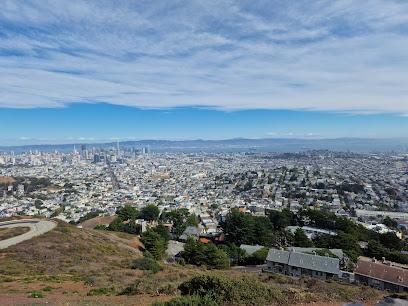
Oakland Zoo
Explore the Oakland Zoo, a vibrant sanctuary for wildlife enthusiasts featuring over 600 animals, interactive exhibits, and breathtaking natural surroundings.

San Francisco Zoo
Explore the San Francisco Zoo, a vibrant animal park featuring diverse wildlife, lush gardens, and engaging educational experiences for all ages.
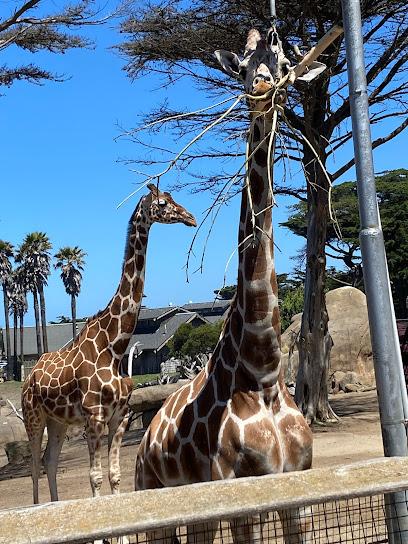
Oakland Zoo
Explore the Oakland Zoo, where wildlife comes alive in a beautiful park setting focused on conservation and education for visitors of all ages.

Marin Headlands
Explore the Marin Headlands, a stunning California park offering breathtaking views, diverse hiking trails, and rich historical landmarks near San Francisco.

Essential places to dine
Denica's Real Food Kitchen
Discover the flavors of Denica's Real Food Kitchen in Castro Valley - where fresh ingredients meet island-inspired breakfast delights.
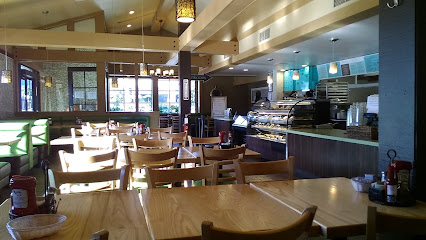
Doug's Place
Experience authentic American breakfasts at Doug's Place in Castro Valley - where every meal feels like home.

Southern Comfort Kitchen
Experience authentic Southern cuisine at Southern Comfort Kitchen in Castro Valley—where every dish tells a story.
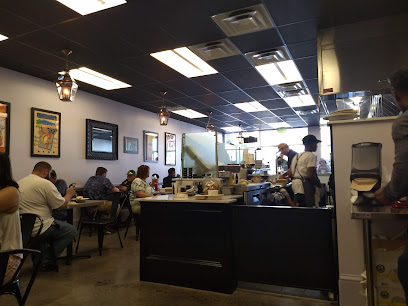
Nation's Giant Hamburgers & Great Pies
Experience delicious hamburgers and scrumptious pies at Nation's Giant Hamburgers & Great Pies in Castro Valley - a must-visit culinary gem.

Luccas Italian Delicatessen
Experience authentic Italian flavors at Luccas Italian Delicatessen in Castro Valley - perfect for dine-in or takeout!

JP's Family Restaurant & Sports Lounge
Discover family-friendly dining at JP's Family Restaurant & Sports Lounge with delicious American cuisine and a lively sports atmosphere in Castro Valley.

Genghix Asian Fusion
Experience the vibrant flavors of Asia at Genghix Asian Fusion in Castro Valley - where tradition meets modern culinary art.

The Habit Burger Grill
Discover The Habit Burger Grill in Castro Valley - where juicy charbroiled burgers meet fresh ingredients in a relaxed dining experience.

Norman's Grill
Discover Norman's Grill in Castro Valley – your go-to spot for delicious American cuisine served in a family-friendly atmosphere.

Boulevard Burger
Discover mouthwatering burgers and a welcoming atmosphere at Boulevard Burger in Castro Valley - perfect for families and food lovers alike.

MOD Pizza
Discover MOD Pizza in Castro Valley - where every pizza is a masterpiece crafted just for you with fresh ingredients and endless possibilities.

Los Molcajetes Mexican Restaurant
Experience authentic Mexican cuisine at Los Molcajetes Restaurant in Castro Valley - where flavor meets tradition in every dish.

Don Jose's Mexican Restaurant
Experience authentic Mexican cuisine in Castro Valley at Don Jose's - where every dish tells a story.

Café Rumi
Discover Café Rumi: where authentic Afghan flavors meet expertly brewed espresso in Castro Valley's charming atmosphere.

Portales Taqueria
Experience the vibrant flavors of Mexico at Portales Taqueria in Castro Valley—where every dish is a celebration of authentic culinary traditions.
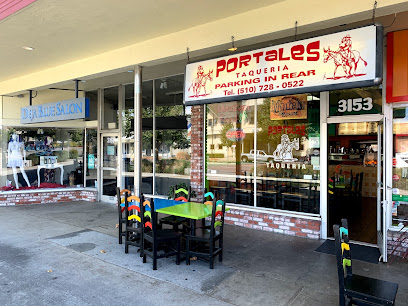
Markets, malls and hidden boutiques
Trader Joe's
Explore Trader Joe's Castro Valley for an exciting selection of organic foods, gourmet cheeses, and unique culinary delights.

Castro Village Shopping Center
Explore the vibrant Castro Village Shopping Center, offering unique shops, diverse dining options, and a delightful community atmosphere in Castro Valley.

Creekside Center
Explore Creekside Center in Hayward, a vibrant shopping mall offering diverse retail options and delicious dining experiences for every visitor.

Golden Tee Golfland
Experience family fun at Golden Tee Golfland in Castro Valley, featuring exciting miniature golf, engaging arcade games, and perfect event venues for celebrations.
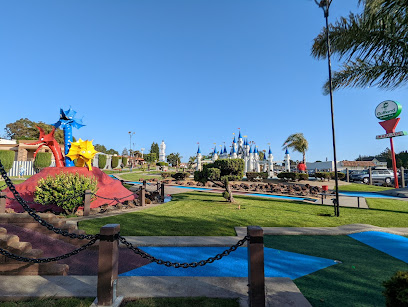
Luccas Italian Delicatessen
Discover the authentic taste of Italy at Luccas Italian Delicatessen in Castro Valley, where fresh ingredients meet traditional recipes.

Ross Dress for Less
Explore unbeatable fashion deals at Ross Dress for Less, your ideal shopping destination for clothing, shoes, and accessories in Castro Valley.
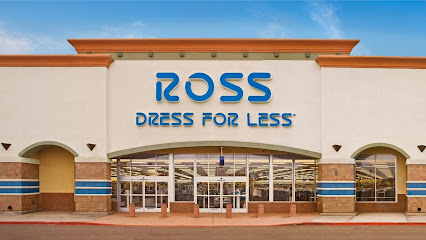
580 Market Place
Explore the vibrant shopping scene and diverse dining options at 580 Market Place, a lively destination in Castro Valley, California.

T.J. Maxx
Uncover stylish bargains at T.J. Maxx, the ultimate destination for affordable fashion and home goods in Castro Valley, California.

Lucky
Explore Lucky in Castro Valley, a vibrant grocery store offering fresh produce, quality meats, and a delightful deli selection.

Castro Valley Marketplace
Explore a culinary paradise at Castro Valley Marketplace, where diverse flavors and local specialties meet in a vibrant food court atmosphere.
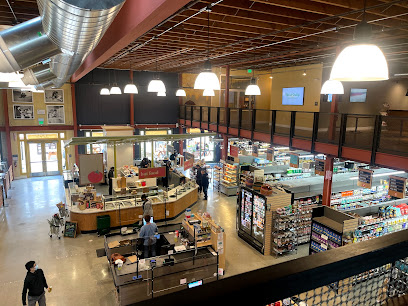
Crush Comics
Discover a treasure trove of comics at Crush Comics in Castro Valley, where stories come alive and fandom thrives in a welcoming atmosphere.

Lake Chabot Public Market
Discover a vibrant food court at Lake Chabot Public Market, featuring diverse culinary delights from fresh meats to international cuisine in Castro Valley.

European Market Deli & Cafe
Discover a unique blend of gourmet grocery items and authentic European cuisine at the European Market Deli & Cafe in Castro Valley.

Castro Valley Sportsmen's Center
Explore the Castro Valley Sportsmen's Center for top-notch fishing gear and expert advice in a welcoming environment for all fishing enthusiasts.

Elite Armory
Elite Armory in Castro Valley: Your go-to destination for firearms, ammunition, and hunting gear, perfect for shooting enthusiasts of all levels.

Essential bars & hidden hideouts
JP's Family Restaurant & Sports Lounge
Experience the best of American breakfast and sports dining at JP's Family Restaurant & Sports Lounge in Castro Valley, the heart of family-friendly fun.

Genghix Asian Fusion
Explore the rich flavors of Asia at Genghix Asian Fusion, where culinary creativity meets traditional taste in Castro Valley.

The Dirty Bird Lounge
Discover the lively atmosphere and delicious cuisine at The Dirty Bird Lounge, Hayward's premier destination for food, drinks, and entertainment.

Norman's Grill
Discover the heart of American dining at Norman's Grill, where family-friendly meals and a welcoming atmosphere await you in Castro Valley.

Boulevard Burger
Discover unique burgers and a family-friendly atmosphere at Boulevard Burger – the ultimate American dining experience in Castro Valley.
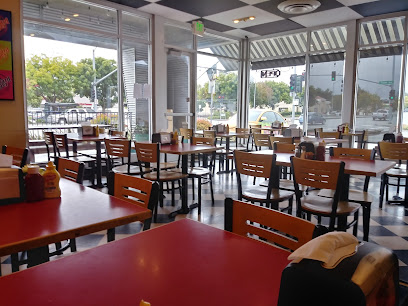
Rickey's Sports Lounge
Discover Rickey's Sports Lounge - the perfect blend of sports, family dining, and entertainment in San Leandro, California.

The Bistro
Discover the vibrant atmosphere of The Bistro, a lively pub in Hayward, offering delicious food, refreshing drinks, and exciting live music.

The World Famous Turf Club
Discover the vibrant atmosphere and innovative cocktails at The World Famous Turf Club, a must-visit bar in Hayward, California.

Koyomi
Experience authentic sushi and Japanese cuisine at Koyomi, Castro Valley's premier destination for fresh flavors and delightful dining.
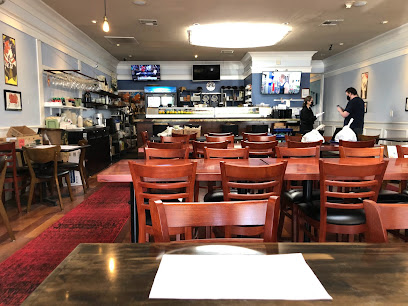
The chicken on Fire
Discover a unique dining experience at The Chicken on Fire, where delicious chicken wings meet Asian fusion flavors in a vibrant atmosphere.

Funky Monkey
Discover Funky Monkey in Hayward, CA—where innovative cocktails and a lively atmosphere create unforgettable memories for every visitor.

The Doolittle
Discover The Doolittle, Castro Valley's charming bar with handcrafted cocktails and a vibrant atmosphere perfect for locals and tourists alike.

Crazy George Taqueria
Discover the vibrant flavors of Mexico at Crazy George Taqueria in Castro Valley, offering delicious tacos and burritos in a casual atmosphere.
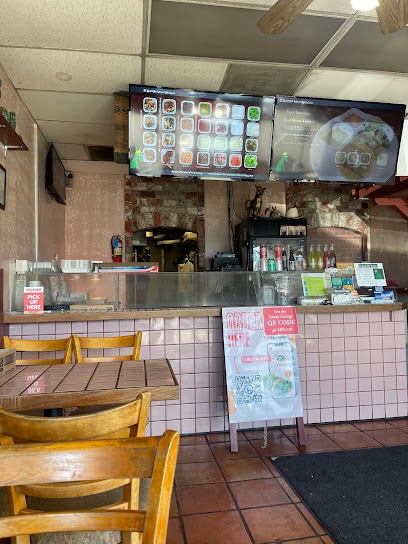
Valley Inn
Discover the charm of Valley Inn, a cocktail bar and event venue in Castro Valley offering delightful drinks and a cozy atmosphere for all.

Fernandes Stein Lounge
Discover the lively ambiance and sports excitement at Fernandes Stein Lounge in Hayward, California, where every game is a reason to celebrate.

Local Phrases
-
- HelloHey
[Hey] - GoodbyeSee ya
[See ya] - YesYep
[Yep] - NoNope
[Nope] - Please/You're welcomePlease/thank you
[Please/thank you] - Thank youThanks
[Thanks] - Excuse me/SorryExcuse me/sorry
[Excuse me/sorry] - How are you?How's it going?
[How's it going?] - Fine. And you?Good. You?
[Good. You?] - Do you speak English?Do you speak English?
[Do you speak English?] - I don't understandI don't get it
[I don't get it]
- HelloHey
-
- I'd like to see the menu, pleaseCan I see the menu?
[Can I see the menu?] - I don't eat meatI'm vegetarian
[I'm vegetarian] - Cheers!Cheers!
[Cheers!] - I would like to pay, pleaseCheck, please
[Check, please]
- I'd like to see the menu, pleaseCan I see the menu?
-
- Help!Help!
[Help!] - Go away!Go away!
[Go away!] - Call the Police!Call the cops!
[Call the cops!] - Call a doctor!Call a doctor!
[Call a doctor!] - I'm lostI'm lost
[I'm lost] - I'm illI'm sick
[I'm sick]
- Help!Help!
-
- I'd like to buy...I want to buy...
[I want to buy...] - I'm just lookingI'm just looking
[I'm just looking] - How much is it?How much does it cost?
[How much does it cost?] - That's too expensiveThat's too pricey
[That's too pricey] - Can you lower the price?Can you give me a discount?
[Can you give me a discount?]
- I'd like to buy...I want to buy...
-
- What time is it?What time is it?
[What time is it?] - It's one o'clockIt's one o'clock
[It's one o'clock] - Half past (10)Ten thirty
[Ten thirty] - MorningMorning
[Morning] - AfternoonAfternoon
[Afternoon] - EveningEvening
[Evening] - YesterdayYesterday
[Yesterday] - TodayToday
[Today] - TomorrowTomorrow
[Tomorrow] - 1One
[One] - 2Two
[Two] - 3Three
[Three] - 4Four
[Four] - 5Five
[Five] - 6Six
[Six] - 7Seven
[Seven] - 8Eight
[Eight] - 9Nine
[Nine] - 10Ten
[Ten]
- What time is it?What time is it?
-
- Where's a/the...?Where's the...?
[Where's the...?] - What's the address?What's the address?
[What's the address?] - Can you show me (on the map)?Can you show me (on the map)?
[Can you show me (on the map)?] - When's the next (bus)?When's the next (bus)?
[When's the next (bus)?] - A ticket (to ....)A ticket (to ....)
[A ticket (to ....)]
- Where's a/the...?Where's the...?
History of Castro Valley
-
Long before European settlers arrived, the region now known as Castro Valley was inhabited by the Ohlone people. These indigenous inhabitants lived in harmony with the land, utilizing the abundant natural resources for food, shelter, and tools. The Ohlone had a rich cultural tapestry, marked by complex social structures, spiritual traditions, and a deep connection to the environment.
-
In the late 18th century, Spanish missionaries began to explore and settle in California. Castro Valley was no exception. The area fell under the influence of Mission San José, established in 1797. The Spanish introduced new agricultural practices and livestock, fundamentally altering the landscape and the lives of the indigenous Ohlone people.
-
The Mexican government secularized the missions in the early 19th century, leading to the redistribution of land in the form of ranchos. Castro Valley was part of the Rancho San Lorenzo, granted to Don Guillermo Castro in 1841. The Castro family played a significant role in the early development of the area, fostering agriculture and cattle ranching on the vast estate.
-
The California Gold Rush of 1848-1855 brought a flood of settlers to the region, including Castro Valley. Although gold was not found in the area, the influx of people spurred development and growth. The fertile land and favorable climate attracted farmers, who began cultivating crops and establishing permanent settlements.
-
Throughout the late 19th and early 20th centuries, Castro Valley evolved into a thriving agricultural community. Orchards, vineyards, and dairy farms dotted the landscape. The fertile soil and temperate climate proved ideal for growing a variety of crops, including cherries, apricots, and walnuts. This agricultural boom laid the groundwork for the community's future prosperity.
-
Following World War II, Castro Valley experienced a significant transformation. The post-war economic boom and the expansion of the San Francisco Bay Area led to rapid suburban development. Former farmlands were subdivided into residential neighborhoods, attracting families seeking a suburban lifestyle. This period saw the construction of schools, shopping centers, and other amenities, shaping the modern community.
-
Today, Castro Valley is a vibrant and diverse community, blending its rich historical heritage with contemporary living. The area boasts a mix of residential, commercial, and recreational spaces, including the scenic Lake Chabot Regional Park. The community continues to celebrate its historical roots while embracing growth and innovation.
Castro Valley Essentials
-
Castro Valley is located in Alameda County, California. The nearest major airport is Oakland International Airport (OAK), which is approximately 14 miles away. Alternatively, you can fly into San Francisco International Airport (SFO), about 27 miles away, or San Jose International Airport (SJC), roughly 36 miles away. From these airports, you can rent a car, take a taxi, or use ride-sharing services to reach Castro Valley. Public transportation options include the Bay Area Rapid Transit (BART) system, with a station conveniently located in Castro Valley.
-
Getting around Castro Valley is convenient with several transportation options. The BART system provides efficient service to various parts of the Bay Area, including San Francisco, Oakland, and Berkeley. Local bus services, operated by AC Transit, cover the area extensively. Taxis and ride-sharing services like Uber and Lyft are also readily available. For those who prefer to drive, car rentals are an option, and the area is well-connected by major highways like I-580.
-
The official currency is the US Dollar (USD). Credit and debit cards are widely accepted in hotels, restaurants, and shops. ATMs are plentiful, especially around shopping centers and the BART station. It's a good idea to carry some cash for smaller establishments and local markets.
-
Castro Valley is generally a safe area for tourists. However, as in any urban environment, it's important to stay vigilant. Avoid poorly lit areas at night and keep an eye on your belongings in crowded places. While Castro Valley does not have specific high-crime areas targeting tourists, it's always best to exercise caution and be aware of your surroundings.
-
In case of an emergency, dial 911 for immediate assistance. The Eden Medical Center in Castro Valley offers emergency medical services. It is recommended to have travel insurance that covers medical emergencies. For minor health issues, there are numerous pharmacies available where you can purchase over-the-counter medications.
-
Fashion: Do dress casually and comfortably, keeping in mind the local climate. Avoid overly revealing clothing in public spaces. Religion: Do be respectful when visiting religious sites; modest attire is recommended. Public Transport: Do be courteous and offer your seat to elderly passengers or those in need. Don't eat or drink on public transport. Greetings: Do greet people with a friendly 'hello' or a handshake. Eating & Drinking: Do try local eateries and accept food offerings graciously. Don't leave large tips as it is customary to tip around 15-20%.
-
To experience Castro Valley like a local, visit the Castro Valley Farmers' Market for fresh produce and local goods. Enjoy outdoor activities at Lake Chabot Regional Park, where you can hike, bike, or fish. Engage with locals at community events and explore the Castro Valley Boulevard for a variety of dining and shopping options. Don't miss the annual Castro Valley Fall Festival, a great way to immerse yourself in the local culture.
Trending Landmark in Castro Valley
-
Lake Chabot Regional Park
-
Japanese Gardens
-
Golden Tee Golfland
-
Castro Valley Community Park
-
Cull Canyon Regional Recreation Area
-
Carlos Bee Park
-
Greenridge Park
-
Redwood Canyon by Wedgewood Weddings
-
Adobe Park
-
Five Canyons Open Space
-
California Historic Civil Engineering Landmark: Chabot Dam
-
Adobe Art Center and Gallery
-
Site of First Public School in Castro Valley (California Historical Landmark No. 776)
Nearby Cities to Castro Valley
-
Things To Do in Hayward
-
Things To Do in San Lorenzo
-
Things To Do in San Leandro
-
Things To Do in Union City
-
Things To Do in San Ramon
-
Things To Do in Danville
-
Things To Do in Pleasanton
-
Things To Do in Fremont
-
Things To Do in Newark
-
Things To Do in Oakland
-
Things To Do in Walnut Creek
-
Things To Do in Berkeley
-
Things To Do in San Mateo
-
Things To Do in Livermore
-
Things To Do in Redwood City







